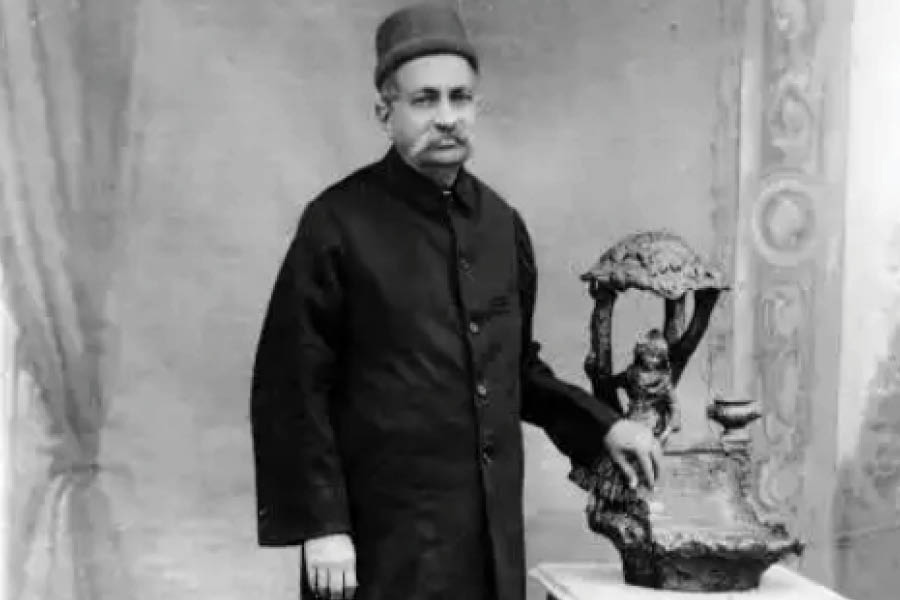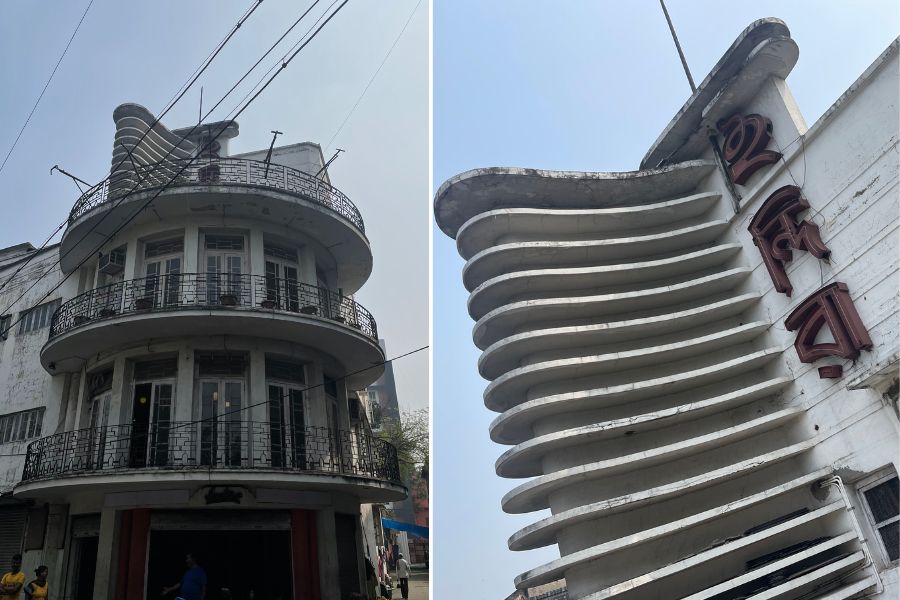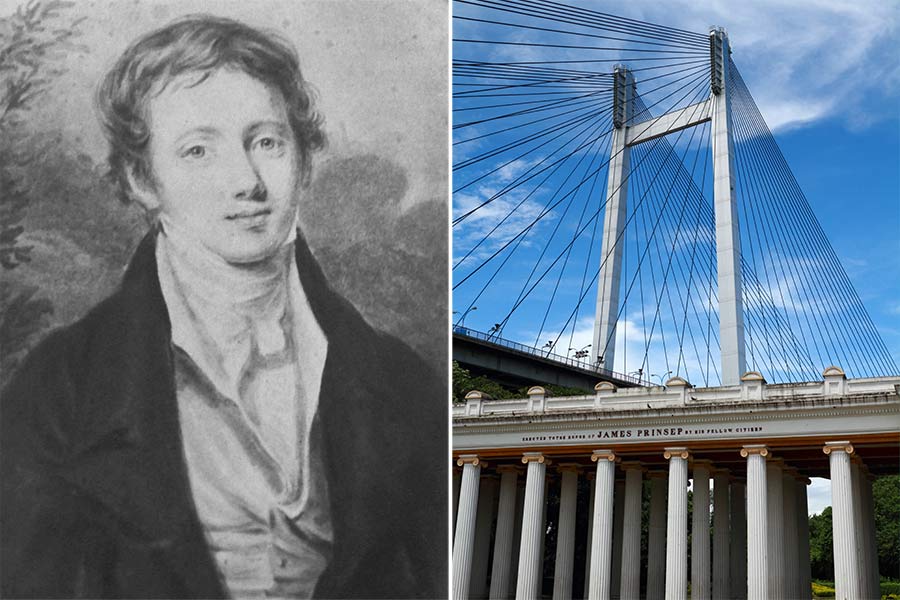Jamshedji Framji Madan was born on April 27, 1857, in a Bombay still under the aegis of the East India Company, barely two weeks before the flames of the great rebellion engulfed northern India. In distant Bombay, young Jamshedji’s childhood, however, progressed quite normally and in reasonable affluence even as the control of India passed from the Company to the British Crown. It all changed when the Bombay Reclamation Bank, in which the Madan family had significant interest, collapsed. Jamshedji was around 10. He had to be withdrawn from school and joined Elphinstone Dramatic Club as a prop boy. Maybe it was destiny. Young Jamshedji fell in love with theatre. It was a love affair that would span half a century and more.
By the mid-1870s, the humble drama club had transformed into a professionally run and managed theatre company – performing to great applause all over the country. It also ignited new dreams in the mind of Jamshedji Madan. In 1882, he left the theatre company and moved to Karachi, setting up a business there. A year later, he relocated to the national capital – Calcutta. Here, Jamshedji set up a business supplying various items to army cantonments. Soon, business was flourishing and Jamshedji now turned his attention to his passion.
Corinthian Hall was renamed as Corinthian Theatre and became an important centre of Calcutta’s theatre landscape. The productions at Corinthian were known for their lavish, grand sets and also employment of female actors – a rarity in those days
He acquired the Corinthian Hall – which was a popular staging centre for plays, located on Dhurumtolla Street (present-day Lenin Sarani). Jamshedji also acquired Elphinstone Theatre Company – where he had learnt the tricks of the trade. Corinthian Hall was renamed as Corinthian Theatre and became an important centre of Calcutta’s theatre landscape. The productions at Corinthian were known for their lavish, grand sets and also employment of female actors – a rarity in those days. Jamshedji Madan kept shuttling between Calcutta and Bombay. In addition to Corinthian, he also set up two theatre companies in Bombay, which were also thriving, adding to his by-now burgeoning wealth.
As the 19th-century drew to a close, a technology revolution was brewing that would change the landscape of entertainment in days to come. In 1896 in Paris, the Pathé brothers established Société Pathé Frères – a manufacturer of film equipment. By the early years of the 20th century, Pathé Frères would become world’s largest film equipment and production company. Jamshedji Madan had been closely following these developments. He got in touch with the company and imported film equipment from Paris.
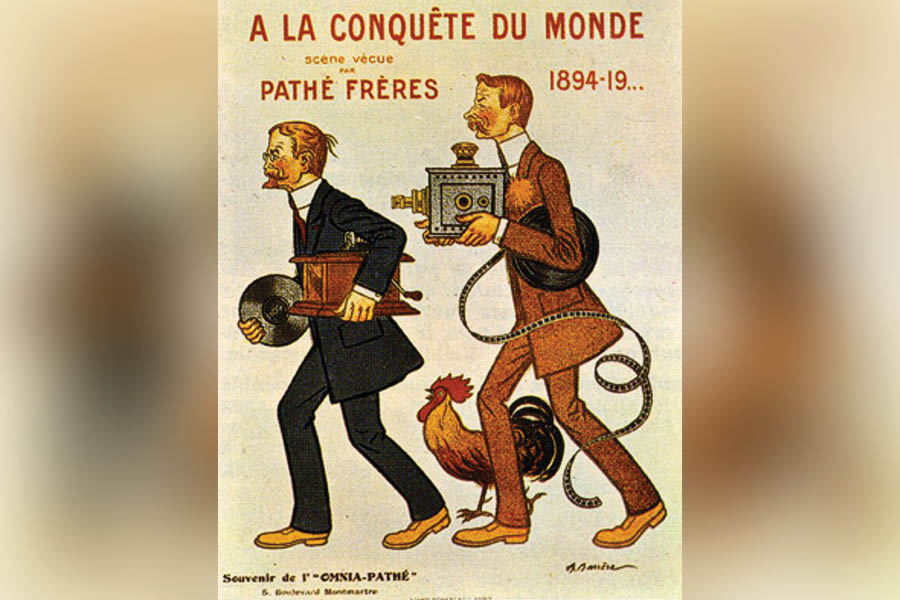
The Pathé Brothers by Adrien Barrère
Wikimedia CommonsIn 1902, Madan moved to Calcutta for good, setting-up his first bioscope show in a tent at the Maidan, soon following it up with similar shows at Corinthian Theatre. Madan formed the Elphinstone Bioscope Co. to run his bioscope business. In the coming years, Madan diversified into film production and exhibition. His company financed a number of short films, including Jyotish Sarkar’s film on the Bengal anti-Partition movement of 1905. The same year, he acquired Alfred Theatre on Harrison Road (present day M.G. Road) where Elphinstone-produced short films were shown.
In 1907, Madan established Elphinstone Picture Palace – the first permanent show house in Calcutta. In the coming years, Madan opened a number of show houses in the city including Palace of Varieties, later renamed as Elite Cinema. When the World War I broke out, Madan became a major supplier to Supply & Transport Corps of the British Indian Army. For his contribution to the war efforts, Madan was appointed as Officer of the Order of the British Empire in 1918 and was later invested as a Commander of the Order in 1923.
As war raged in Europe, Madan’s film business went from strength to strength. In 1917, Madan produced Satyavadi Raja Harishchandra – a shorter version of Dadasaheb Phalke’s Raja Harishchandra, the first Indian feature film
But, even as war raged in Europe, Madan’s film business went from strength to strength. In 1917, Madan produced Satyavadi Raja Harishchandra – a shorter version of Dadasaheb Phalke’s Raja Harishchandra, the first Indian feature film. Satyavadi Raja Harishchandra was also directed by Phalke and it was the first feature film to be shot in Calcutta. Two years later, Madan produced Bilwamangal – often credited as the first Bengali feature film. Bilwamangal released on November 1, 1919, at the Cornwallis Theatre.
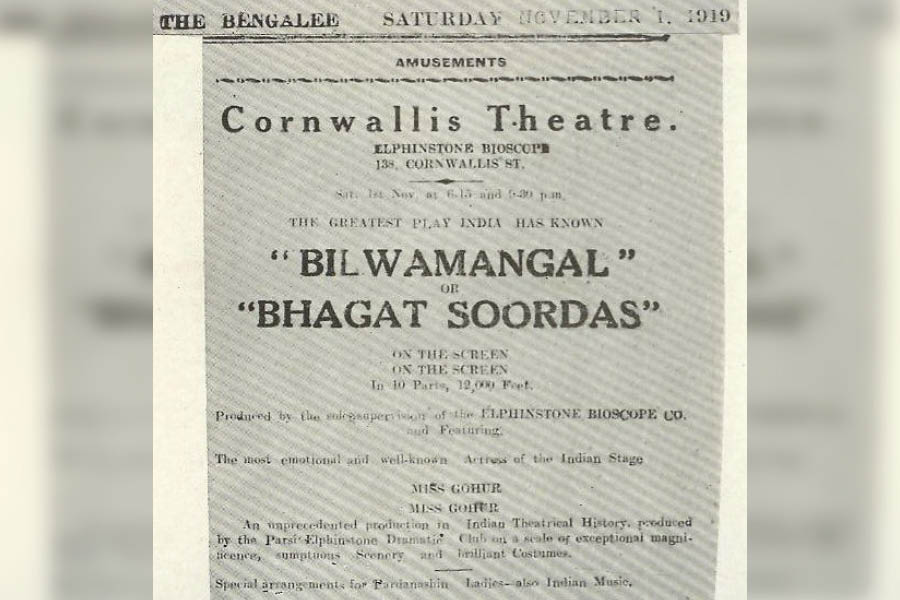
An advertisement for ‘Bilwamangal’
In 1919, Madan converted Elphinstone Bioscope Company into a joint stock company in partnership with Kanhaiyalal Kaushik. The new entity was named Madan Theatres. In the years after WWI ended, Madan Theatres boomed, as it became the biggest player in the fledgling cinema industry of India. The business spread to Burma and Ceylon as well. In 1922, Madan Theatres co-produced a silent film based on the story of Savitri and Satyavan – in collaboration with an Italian production house. It was directed by Italian director Giorgio Mannini. Besides Mannini, Madan Theatres also worked with other European directors like Eugenio di Liguoro and Camille le Grand.
On June 28, 1923, Jamshedji Madan breathed his last. However, Madan’s demise did not slow down Madan Theatre’s business. His third son, J.J. Madan, took over the management of the company and saw it reach new highs. By the late 1920s, Madan Theatres owned 127 show houses across the subcontinent and effectively controlled more than half of the country’s box office. They also slowly moved away from mythological films to producing other kind of content. Some prominent releases during this period were: Bishabriksha (1928), Durgesh Nandini (1927) and Radharani (1930), all based on Bankim Chandra Chatterjee’s works; Giribala (1929), based on Rabindranath Tagore’s work; Jamai Shashthi (1931), the first Bengali talkie and Indrasabha (1932) – a musical with 72 songs (still a record for a musical). Madan’s business, however, was adversely hit by the Great Depression of 1930, and by the mid-1930s, it was struggling. Madan Theatres finally went out of business in 1937.
In today’s Kolkata, little remains of this pioneering man who made the city his karmabhoomi. His beloved Elphinstone Picture Palace – which is better known as Chaplin – closed down and was demolished in 2013. Like many extraordinary pioneers, Jamshedji Madan is today only a fragment of forgotten memory.


